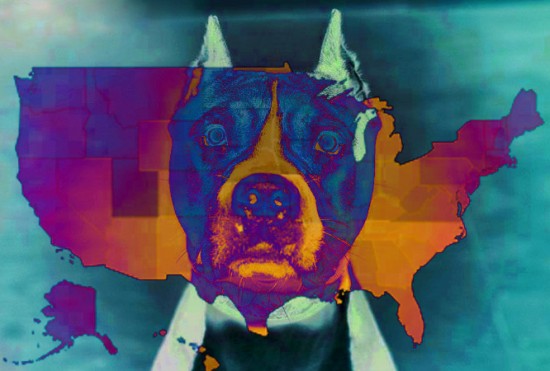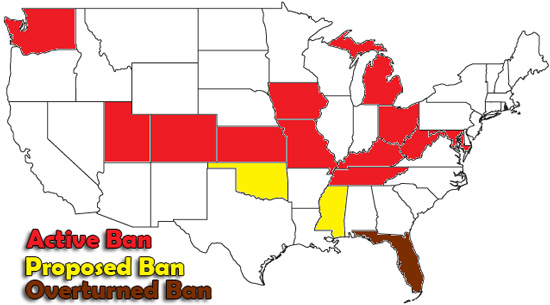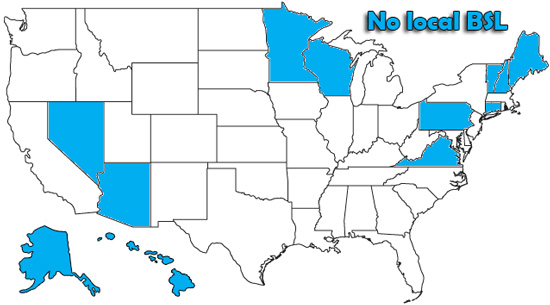BSL in the Courts
Court cases challenging BSL have focused on constitutional concerns such as substantive due process, equal protection, and vagueness. Most BSL will survive the minimum scrutiny analysis allowed by the due process clauses of the Constitution’s Fifth and Fourteenth Amendments because there is no fundamental right at issue. This analysis requires that the law being challenged must be rationally related to a legitimate government goal or purpose. Because state and local jurisdictions enjoy broad police powers, including protecting the public’s safety and welfare, courts have not had trouble finding that BSL is rationally related to the goal of protecting the public from allegedly dangerous breeds.Challenges based on equal protection arguments are similarly difficult to sustain. Here courts are looking at whether there is a rational purpose for treating pit bull breeds differently from other dog breeds. Dog owners have attacked the rational purpose requirement by arguing either that BSL is over–inclusive, because it bans all dogs of a breed when only certain individuals within the breed have proven to be vicious, or under–inclusive, because many types of dogs have injured people and the BSL fails to include those other breeds. However, again under minimum scrutiny review, BSL will survive as long as the government can establish that the BSL is rationally related to its purpose, even if the law is found to be over–inclusive or under–inclusive.
Claims that BSL is unconstitutionally vague have brought dog owners mixed success. Procedural due process requires that laws provide the public with sufficient notice of the activity or conduct being regulated or banned. Here owners of pit bulls or other banned breeds argue that the breed ban laws do not adequately define just what is a “pit bull” (or other banned breed) for purposes of the ban. Another argument is that the laws are too vague to help the dog–owning public or the BSL enforcement agency—such as animal control or police—to be able to identify whether a dog falls under the BSL if the dog was adopted with an unknown origin or is a mixed breed. In the Niko case it took a DNA test to resolve this issue, after which the charges based on the BSL were dropped.
Enforcement Issues
Enforcement of BSL naturally leads to the question: Who determines whether a dog is one of the banned or regulated breeds, and what is the procedure for that determination? Surprisingly, in places such as North Salt Lake, Utah, the city manager has sole authority to make that call. In other places it is the mayor or animal control officers. No special training in breed identification is required. Some jurisdictions have passed their BSL legislation without any input from a veterinarian, presumably the type of expert most capable of identifying dog breeds. Attorney Ledy VanKavage has spent the last decade studying BSL and is considered one of the country’s foremost experts on the subject. She is now general counsel for Best Friends Animal Society after working for years as the senior director of legislation and legal training for the American Society for the Prevention of Cruelty to Animals (ASPCA). She calls BSL “breed discrimination laws” and asserts that with the advance of DNA analysis for dogs becoming more available, the days of mere “canine profiling” and arbitrary enforcement are numbered. VanKavage believes that because the government has the burden of proving that a dog is one of the breeds banned or regulated by BSL, cities will have to seriously weigh whether they should pony up the high cost of DNA tests or simply give up trying to enforce BSL.http://www.americanbar.org/newsletter/publications/gp_solo_magazine_home/gp_solo_magazine_index/pitbull.html

















